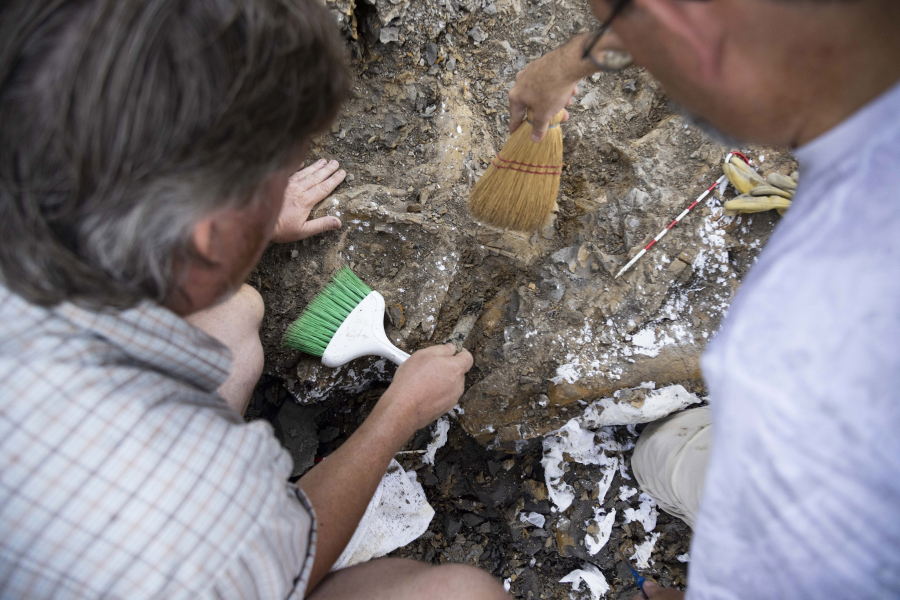DALLAS — Scientists from the Perot Museum of Nature and Science recently named a newly discovered species of a plant-eating dinosaur, suggesting the animal once used to roam eastern North America more than 96 million years ago.
In 2020, a small fossil of a jawbone was discovered at a rock formation near Lake Grapevine, outside Dallas, where paleontologists with the museum have been collecting fossils for years. Initially, scientists thought the 2-inch-long jaw fossil belonged to a small crocodile, but they soon discovered they were wrong.
“It wasn’t until we got it back to the lab and got under a microscope and cleaned it up using little pins and needles,” said Ron Tykoski, vice president of science at the Perot, “that we realized it was not like a little crocodile, but instead it was a new little kind of dinosaur.”
After three years of investigation and research, scientists recently published their findings in the Journal of Vertebrate Paleontology. They named the dinosaur after the volunteer who found it, Murray Cohen, as well as the city it was found near. The dinosaur’s name, Ampelognathus coheni, roughly translates to “Cohen’s Grapevine jaw.”
Many ornithopod dinosaurs are similar, so it wasn’t clear at first if scientists had stumbled upon a new species; however, upon further inspection of the fossil, they quickly realized the jaw didn’t match the anatomy of other big dinosaurs in the area. After eliminating the potential of a crocodile and a big dinosaur, scientists began seriously examining if they were dealing with a new species.
The small dinosaur would have been about 6 feet long, or the size of a standard office desk, and weighed somewhere around 20 to 60 pounds, or the size of a midsized dog.
“It’s a little bitty animal,” Tykoski said. “You could almost hold its head in your hand.”
Small plant-eating dinosaurs hadn’t been discovered in North Texas before, making this finding somewhat novel for the science world, according to Tykoski.
The discovery also has significant implications for the science community and the future of fossil exploration in North Texas, he said. The last time scientists uncovered a new species in the same rock formation was in 2010.
Moreover, dinosaur fossils from 96 million years ago are not particularly well represented in North America, which paints a murky picture of what life was like at that time.
This fossil “is actually starting to give us the best picture, the best snapshot of life, in eastern North America, east of the Seaway, of this age,” Tykoski said. “We predicted there should be plant-eating dinosaurs and animals living here. We just can’t find them.”
This little dinosaur’s discovery in North Texas verifies that this species did in fact call the area home at one point and suggests more can be found in the years ahead.
“There will be more discoveries, and more things coming out in the coming years,” Tykoski said. “We’re just starting to scratch the surface, and just starting to paint that picture of life here in our backyard 96 million years ago.”



